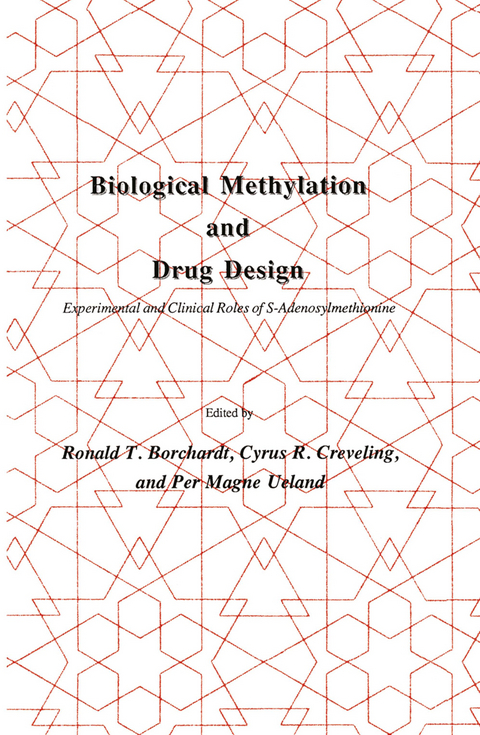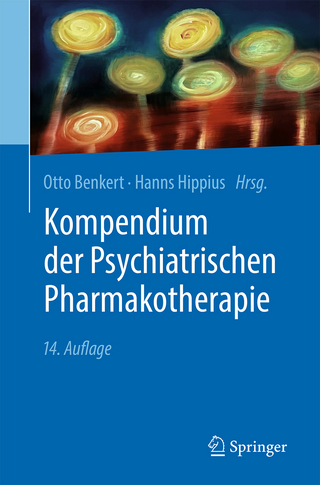
Biological Methylation and Drug Design
Humana Press Inc. (Verlag)
978-0-89603-102-9 (ISBN)
Preface.- Tributes.- Acknowledgments.- Contributors.- A. Protein and Phospholipid Methylations.- Protein Methylation at Abnormal Aspartyl Residues.- Enzymology of Protein Methylation: Recent Developments.- Is There a Function for Protein Carboxymethylation in the Nervous System?.- Methyl-Accepting Chemotaxis Proteins in Bacteria.- Biochemistry of Methylated Phospholipids.- Phospholipid Methylation and Cellular Differentiation.- Methylation of Phosphatidylethanolamine: Enzyme Characterization, Regulation, and Physiological function.- Regulation of Phospholipid Methylation by Reversible Phosphorylation.- Brain Phosphatidylcholine Pools as Possible Sources of Free Choline for Acetylcholine Synthesis.- B. Nucleic Acid Methylations.- DNA Methylation: Overview and Prospectives.- Tissue-Specific DNA Methylation Patterns: Biochemistry of Formation and Possible Role.- Regulation of Gene Expression by Site-Specific Promoter Methylation.- Carcinogenesis and DNA Hypomethylation in Methyl-Deficient Animals.- The Role of Coenzymes and tRNA Modifications in Metabolic Control of Gene Expression.- Relationship Between Methylation and Maturation of Ribosomal RNA in Prokaryotic and Eukaiyotic Cells.- Distribution of m6A in RNA and Its Possible Biological Role.- C. Regulation of S-Adenosylmethionine, S-Adenosylhomocysteine, and Methylthioadenosine Metabolism.- Regulation of S-Adenosylmethionine Synthesis in Human Lymphocytes.- Cancer, Methionine, and Transmethylation.- The Centrality of S-Adenosylhomocysteinase in the Regulation of the Biological Utilization of S-Adenosyhnethionine.- S-Adenosylhomocysteine Hydrolase.- Probes for Examining the Structure and Function of Human S-Adenosylhomocysteine Hydrolase, and for Isolation of cDNA.- Disposition of Endogenous S-Adenosylhomocysteine and Homocysteine Following Exposure to Nucleoside Analogs and Methotrexate.- Regulation of S-Adenosylmethionine and Methylthioadenosine Metabolism in Methylthioadenosine Phosphorylase-Deficient Malignant Cells.- Purification and Properties of Mammalian S’-Methylthioadenosine Phosphorylase and Bacterial 5’-Methylthioadenosine Nucleosidase: Pharmacological Implications and Perspectives.- Uncoupling of Granulopoietic Cell Proliferation and Differentiation by Methylthioadenosine.- D. Clinical Aspects of S-Adenosylmethionine.- AdoMet as a Drug: Pharmacokinetic and Pharmacological Aspects.- A Biochemical Study of Depressed Patients Receiving S-Adenosyl -L-methionine (SAM).- Noradrenergic and Cardiovascular Effects ofChronic S-Adenosyl-methionine in Healthy Volunteers.- Role of the One-Carbon Cycle in Neuropsychiatry.- Double-Blind Study of S-Adenosylmethionine Versus Placebo in Hip and Knee Arthrosis.- E. Design, Synthesis, and Biological Evaluation of Transmethylation Inhibitors.- Methionine Analog Inhibitors of S-Adenosylmethionine Biosynthesis as Potential Antitumor Agents.- Metabolism and Mechanism of Action of Neplanocin A—A Potent Inhibitor of S-Adenosylhomocysteine Hydrolase.- Biological Consequences of S-Adenosyl-L-homocysteinase Inhibition by Acyclic Adenosine Analogs.- Nucleoside Analogs as Antiviral Agents.- Studies Concerning the Mechanism of Action of 3-Deazaadenosine in Leukocytes.- Mechanism-Based Inhibitors of Alkyltransferase.- Sinefungin and Derivatives: Synthesis, Biosynthesis, and Molecular Target Studies in Leishmania.
| Erscheint lt. Verlag | 15.4.1986 |
|---|---|
| Reihe/Serie | Experimental Biology and Medicine ; 12 |
| Zusatzinfo | XXII, 458 p. |
| Verlagsort | Totowa, NJ |
| Sprache | englisch |
| Maße | 152 x 229 mm |
| Themenwelt | Medizin / Pharmazie ► Medizinische Fachgebiete ► Pharmakologie / Pharmakotherapie |
| Medizin / Pharmazie ► Pharmazie ► PTA / PKA | |
| Naturwissenschaften ► Biologie ► Biochemie | |
| ISBN-10 | 0-89603-102-0 / 0896031020 |
| ISBN-13 | 978-0-89603-102-9 / 9780896031029 |
| Zustand | Neuware |
| Informationen gemäß Produktsicherheitsverordnung (GPSR) | |
| Haben Sie eine Frage zum Produkt? |
aus dem Bereich


